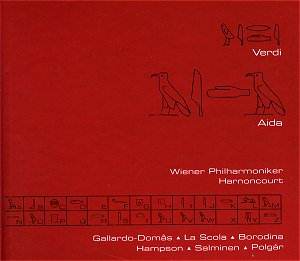 Composer: Jean Sibelius
Composer: Jean Sibelius
Works: Symphony No. 2 (1902), Symphony No. 3 (1907)
Performers: Vienna Philharmonic Orchestra, Lorin Maazel
Recording: Sofiensaal, Vienna, April 1964, March-April 1968, ADD
Label: Decca
Sibelius, a titan of early 20th-century music, strides through the landscape of symphonic composition with a distinctive voice that melds Nordic mystique with a profound emotional depth. His Second Symphony, completed in 1902, is often viewed as a declaration of Finnish national identity, while the Third Symphony, written in 1907, signals a shift towards a more concise and modernist style. This coupling of works, recorded under the baton of Lorin Maazel with the Vienna Philharmonic Orchestra, showcases the evolving character of Sibelius’s orchestration and thematic development, making for an engaging juxtaposition.
Maazel’s interpretation of the Second Symphony is marked by a palpable intensity that resonates with the work’s dramatic arc. From the outset, the Vienna Philharmonic delivers an exhilarating performance; the first movement’s opening theme is imbued with a raw, Tchaikovskian fervor that sets a vigorous tone. The orchestra’s strings, while perhaps lacking the lushness of contemporary recordings, articulate the thematic material with clarity and fervor, particularly in the stirring Allegretto, where the woodwinds’ interplay with the strings creates a vibrant tapestry of sound. The climaxes are bold and assertive, and Maazel’s insistence on dynamic contrasts amplifies the work’s inherent tension. One cannot overlook the vibrant brass, which punctuates the climactic moments with a boldness that is both thrilling and resonant.
The sound quality of this recording, while somewhat marred by a low wash of hiss—particularly in the older Second Symphony—does not detract significantly from the listening experience. The Decca analogue sound captures the orchestra’s expansive palette well, allowing for an engaging stereo separation that reveals many of Sibelius’s intricate details. Listeners who follow along with the score will find rich rewards in the meticulous orchestration; for example, the extraordinary horn passages at 7:43 in the finale exhibit a gruff, almost visceral character, showcasing Maazel’s ability to bring forth the latent drama within the score.
Transitioning to the Third Symphony, Maazel adopts a more expansive approach, which contrasts sharply with interpretations that emphasize its chamber-like qualities. While some may argue that this interpretation sacrifices subtlety for grandeur, the excitement generated in the moderato-allegro ma non tanto movement is undeniable. Here, the orchestral forces coalesce into a robust sound that suggests a lingering connection to Sibelius’s earlier Russian influences. The andantino, however, perhaps benefits from a more measured tempo; the briskness observed may gloss over the movement’s introspective qualities. Yet, this is counterbalanced by the exhilarating drive of the finale, which showcases the orchestra’s precision and Maazel’s flair for the dramatic.
The artistic intelligence behind this recording serves to illuminate the journey from Sibelius’s Russian nationalism to a new, more streamlined idiom found in his Third Symphony. The contrasts between these two works highlight Sibelius’s evolving musical philosophy, and Maazel’s interpretations, though occasionally polarizing, reveal a profound understanding of the symphonic form.
This recording of Sibelius’s Second and Third Symphonies is a commendable addition to the catalog. While it may not entirely supplant the more nuanced interpretations of contemporary conductors, it stands as a testament to Maazel’s dynamic approach and the Vienna Philharmonic’s prowess. The energy and commitment of this performance make it a worthy exploration of Sibelius’s symphonic evolution, capturing both the tempestuous spirit of his early works and the thoughtful restraint of his later compositions. The listener is left with a vivid impression of the composer’s genius and the orchestra’s instrumental brilliance.



